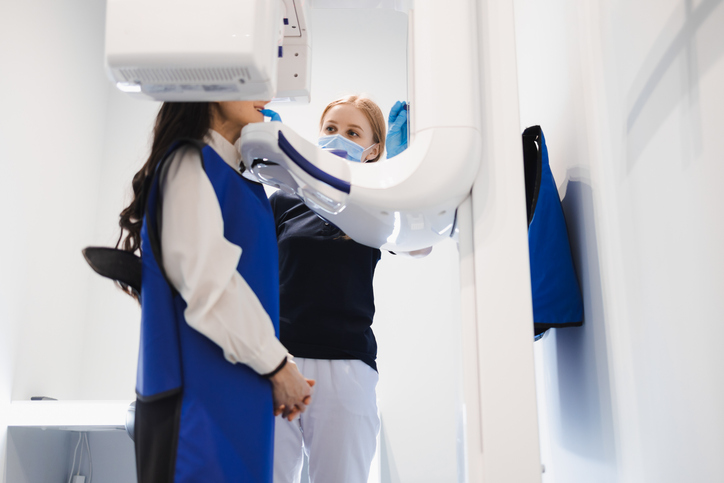
X-rays are often performed in a dental office so your dentist can assess the health of your teeth and gums.
Are you visiting your dentist soon? Chances are you’ll get an X-ray. Dental X-rays are a standard diagnostic tool allowing dentists to see what is going on in your mouth. Your dentist will also perform a visual check of your teeth and gums, but an X-ray provides a clearer view of tooth decay or other issues in their early stages so they can be treated as soon as possible. If dental problems aren’t diagnosed and treated early, you’re headed for a world of pain, complications, and extra expenses.
While an X-ray can be uncomfortable, the images can spot decay between teeth and below the gum line, existing fillings, abscesses, cysts, and tumors. X-rays can also show bone loss and changes in tooth alignment. You’ll always receive an X-ray if you are fitted with dentures, implants, or braces. In children, X-rays can detect decay and impacted teeth and whether there is enough space for incoming permanent teeth. All that is possible with the different types of dental X-rays used today, which we will discuss below!
The different types of dental X-rays
Dental X-rays fall into two categories: intraoral and extraoral:
Intraoral. X-rays taken inside the mouth give a snapshot of the overall health of your teeth and jaw. The images can pinpoint cavities and show the root and bone status around the tooth. Intraoral X-rays are taken most often in a dental office.
Extraoral. An extraoral X-ray can assess what’s happening in your jaw and skull using images from outside your mouth. As such, these X-rays can visualize tooth development and positioning in relation to the jaw. Impacted teeth will show up on an extraoral X-ray.
How often will you need a dental X-ray?
Your dentist will tell you when an X-ray is needed. The timing typically depends on your age and the health of your teeth.
Young children. Since their teeth are still developing, young children require X-rays more often. Children with a lot of decay will need X-rays every six months. If there’s no decay, your dentist will recommend an X-ray every 12 to 24 months.
Adolescents. If decay is present, adolescents need X-rays every six to 12 months until the decay is cleared. Afterward, X-rays can be taken every 18 to 36 months. X-rays can also check for wisdom teeth in adolescents.
Adults. Adults with a high level of decay or at risk of decay will need X-rays every 12 to 18 months. X-rays can be spread out every 24 to 36 months for those who don’t have much decay. People with dry mouth may require more frequent X-rays.
X-rays are extremely safe at any age. The machines emit only a tiny amount of radiation and are confined to a very small area. Plus, your dentist will take all precautions to protect you from exposure, such as covering you with a lead-lined apron and ensuring the X-ray device works safely.
New innovations in dental imaging are on the horizon. Many dentists are already using digital radiographs to create a computer image of the mouth. Digital imaging releases much less radiation than a traditional X-ray.
Whatever type is used, the X-ray images relayed to your dentist will help keep your teeth and gums healthy. X-rays are the first step to better oral health.
Time for a checkup? See Espire Dental
Schedule an appointment at Espire’s Oklahoma City, Oklahoma, location today! Our highly trained dentists can check your teeth using dental X-rays while assuring your comfort and safety during the imaging. Don’t live near our Oklahoma City office? Find one of our other locations near you.
Oklahoma City, OK
12448 St Andrews Drive
Oklahoma City, OK 73120
